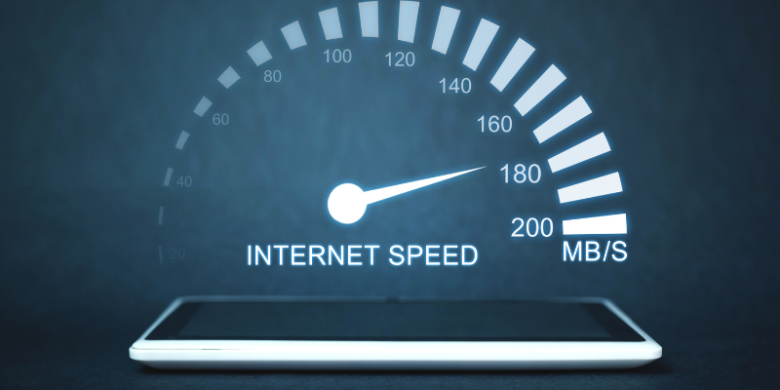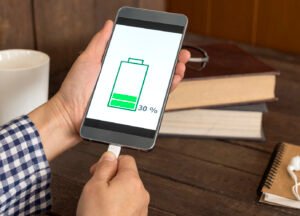Even if you can’t afford to upgrade your internet service provider or Wi-Fi gateway/hub, there are still simple and straightforward solutions that could improve your connection speed. Run an accurate speed test and learn to identify causes of slow connections.
1. Upgrade Your Router
Your router and modem are responsible for handling all your internet data, so if they’re outdated or incapable of maintaining the speed you pay for, your network could experience decreased speeds. One option would be upgrading it with one that provides new connection protocols.
Routers emit signals in all directions, yet walls, furniture, and appliances may absorb them and reduce speeds. Try moving the router to another part of your home or installing a mesh network made up of multiple wireless units to cover corners and obstacles more effectively. Change your router channel to avoid interference from other networks by accessing its admin interface (web app access may differ) and selecting a different channel.
2. Upgrade Your Internet Service
If you’re not satisfied with your internet speed, you may consider upgrading your service plan to one that offers faster connectivity speeds.
Upload speeds are equally as critical as downloading rates. Upstream data usage, such as uploading pictures to social media, streaming videos, or playing online games, can all require significant bandwidth consumption. If you’re on a tight budget, contact your ISP and see if they offer any affordable plans that can provide the internet speed you require. Don’t forget to run a speed test first!
3. Clear Your Cache
Websites and applications typically store information (such as images or website info) to load faster the next time you visit, known as caching. Clearing this out can speed up Internet use as well as free up storage space on your device.
But cached files can become outdated or inaccurate over time, slowing down your Internet or causing certain websites to not display correctly. Therefore, you must regularly clear your cache—most browsers offer this function under ‘clear browsing data’ or something similar in their menu options.
4. Turn Off Unnecessary Applications
Memory- and bandwidth-hogging programs can impede internet speeds. Removing unnecessary applications may improve web browsing, downloading, and uploading speeds. Frequently clearing browser cache and cookies can speed up operations, as social media and streaming apps continue to use data even after they close.
Many Internet and cellular providers impose monthly data caps, exceeding which could cause your Internet to slow down until the next billing cycle. To avoid this happening again, try switching from Wi-Fi to Ethernet instead, updating drivers as soon as they become outdated, and uninstalling applications that take up an excessive amount of bandwidth.
5. Upgrade Your Browser
Browser manufacturers regularly issue updates designed to address security and performance issues, so if your browser is outdated, upgrading it could improve your browsing experience while speeding up Internet speeds.
Clear your browser cache regularly to force it to refresh pages with the most up-to-date data, as this can make browsing pages faster. Furthermore, it’s advisable to delete browser history files, as this could contain personal details that hackers could exploit to gain entry to your account. Experiencing slow Internet speeds? Frontier Fiber’s ultrafast connection is ideal for streaming videos and working from home as well as running your smart home seamlessly.
7. Upgrade Your Hardware
Hardware used to connect to the internet at home plays a pivotal role in how fast or slow your internet is. If you are on a slower plan or your current router is outdated and ineffective, upgrading may be worth your while.
Newer tech can enhance internet speed by providing faster and more stable connections. Ethernet cables offer greater reliability over longer distances; powerline adapters bring speed through electrical wiring; mesh kits eliminate dead zones—these options all work to expand coverage to meet various activities’ data needs; choose one that best meets yours!
8. Turn Off Unnecessary Devices
If your home Wi-Fi network contains multiple devices connected at once, they could compete for bandwidth. Disconnecting unnecessary devices and activating QoS settings on the router may help to boost internet speeds and ensure better internet speed.
If you’re still having issues, try connecting directly to your router via an Ethernet cable or upgrading the wireless signal with a Wi-Fi extender. If speed test results don’t correspond with advertised service plan speeds, speak with your ISP directly about all available solutions—they may offer specific advice tailored specifically to your setup and usage habits.
9. Run a Speed Test
There are various online services that offer tests of network speeds, both download and upload rates, to help identify any changes to your connection, as well as make informed decisions about how you can increase its performance at home.
If your speeds seem slow, consider whether you are using too much data or your device is obsolete. Keep in mind that different activities require different internet capabilities; Verizon offers plans with flexible terms to meet all of your internet requirements.




